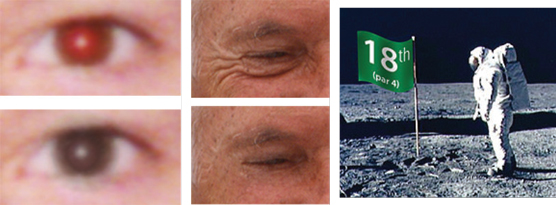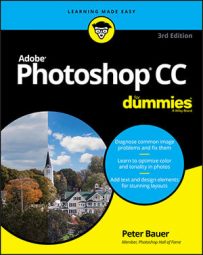As the Help Desk Director for KelbyOne (formerly the National Association of Photoshop Professionals), I spent more than two decades solving problems and providing solutions for Photoshop users from every corner of the computer graphics field and from every corner of the world. (It always amazed me how some people used Photoshop in ways for which the program was never designed!)
Of course, Photoshop is my “go-to” program for my own fine art photography and design work. Now, as a consultant, I also use Photoshop on a regular basis to identify fraudulently manipulated images and video.
What Photoshop is designed to do
Adobe Photoshop is an image-editing program. It’s designed to help you edit images—digital or digitized images, photographs, and otherwise. This is the core purpose of Photoshop. Over the years, Photoshop has grown and developed, adding features that supplement its basic operations. But at its heart, Photoshop is an image editor.At its most basic, Photoshop’s workflow goes something like this: You take a picture, you edit the picture, and you print the picture (as illustrated). (Of course, many images never make it to paper—they are shared only on social media.)
 Basic Photoshop: Take photo, edit photo, print photo. Drink coffee (optional).
Basic Photoshop: Take photo, edit photo, print photo. Drink coffee (optional).Whether captured with a digital camera, scanned into the computer, or created from scratch in Photoshop, your artwork consists of tiny squares of color, which are picture elements called pixels. Photoshop is all about changing and adjusting the colors of those pixels—collectively, in groups, or one at a time—to make your artwork look precisely how you want it to look. (Photoshop, by the way, has no Good Taste or Quality Art button. It’s up to you to decide what suits your artistic or personal vision and what meets your professional requirements.)
Some very common Photoshop image-editing tasks are shown in the following figure: namely, correcting red-eye, minimizing wrinkles, and compositing images.
 Astronaut image courtesy of NASA
Astronaut image courtesy of NASASome common Photoshop tasks.
Photoshop works with actual vector shapes, such as those created in Adobe Illustrator. Photoshop also has a very capable brush engine, including erodible brush tips (they wear down and need to be resharpened) and airbrush and watercolor brush tips, further extending the fine art painting capabilities of the program.
The following figure shows a comparison of raster artwork (the digital photo, left), vector artwork (the illustration, center), and digital painting (right). The three types of artwork can appear in a single image, too.
 You can use Photoshop with raster images, vector shapes, and even to paint.
You can use Photoshop with raster images, vector shapes, and even to paint.Photoshop also includes some basic features for creating web graphics, including slicing and animations. (Web work is best done in a true web development program, such as Dreamweaver. If you want to learn about creating websites, pick up a copy of Dreamweaver CC For Dummies [Wiley].)
Other things you can do with Photoshop
Admittedly, Photoshop just plain can’t do some things. It won’t make you a good cup of coffee. It can’t press your trousers. It doesn’t vacuum under the couch. It isn’t even a substitute for Zoom, Microsoft Excel, or TurboTax—it just doesn’t do those things.However, there are a number of things for which Photoshop isn’t designed that you can do in a pinch. If you don’t have InDesign, you can still lay out the pages of a newsletter, magazine, or even a book, one page at a time. If you don’t have Dreamweaver, you can use Photoshop to create a website, one page at a time, sliced and optimized and even with animated GIFs. You can create multipage PDFs and PDF presentations. And although you’re probably not going to create the next blockbuster on your laptop with Photoshop, the video editing capabilities can certainly get you through the family reunion or that school project.

